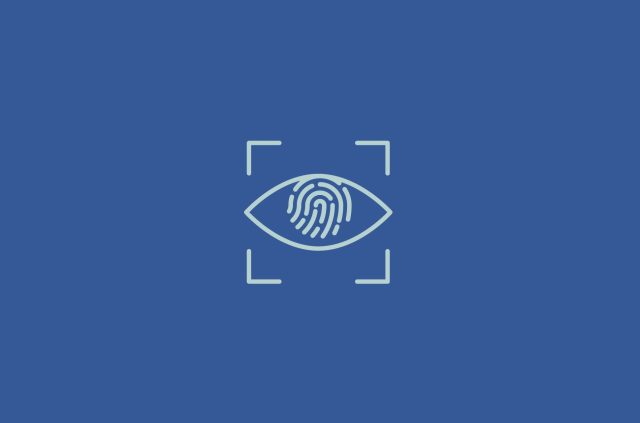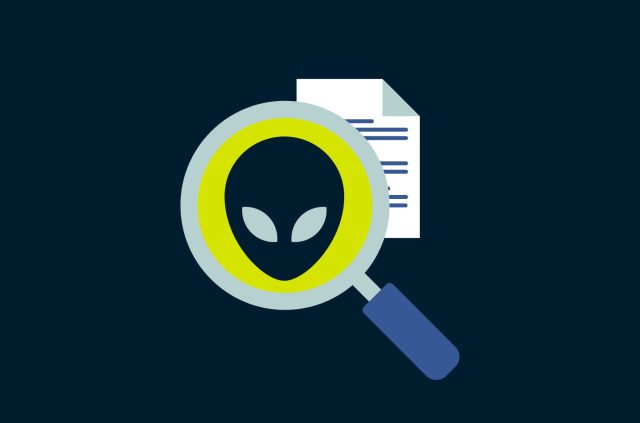
Earlier this year, the Biden administration quietly rolled out CBP One, an app from the U.S. Customs and Border Protection agency that collects biometric data of asylum seekers. This is part of a larger effort in the U.S. and around the world to use biometrics within the realm of immigration.
The concern among critics is growing surveillance using biometrics—and it affects a lot of people, not just asylum seekers and immigrants. Many of us have already experienced so-called “smart borders” in our travels. These systems collect a lot of personal data, through face scans, thumb prints, and more. It’s difficult to opt out, and what happens to your data is out of your hands.
Over the long term, there is the risk of being followed around by governments, once they’re able to track your face.
[Stay up to date with the latest in privacy. Sign up for the ExpressVPN blog newsletter.]
What are smart border systems?
Smart borders are systems that aim to make border control more efficient and more effective with technologies like biometrics and artificial intelligence. This happens in combination with the use of passports or national identity cards.
Smart borders are facilitated by machines installed in airport immigration areas, where travelers might have their faces, fingerprints, or even irises scanned.
Pros and cons of smart borders
Pros:
✓ Potential increase in security for safer travel
✓ Shortened time spent in airports
Cons:
✗ Potential for increased surveillance of individuals who give up biometric data
✗ Sensitive information can be stored for indeterminate periods of time
✗ Questionable effectiveness and need for the technology
✗ A higher propensity for misidentifying persons of color
Smart borders around the world
Australia
SmartGate is the land Down Under’s choice in an automated border-control system. Operated by the Australian Border Force, SmartGate provides access into Australia from travelers who hold ePassports issued by approved countries and are over the age of 16.
What’s collected?
Facial biometrics
Who can use SmartGate?
Travelers from Australia, Austria, Canada, China, Denmark, France, Finland, Hong Kong SAR, Republic of Ireland, Italy, Luxembourg, Japan, Macao SAR, Malaysia , New Zealand, Singapore, South Korea, San Marino, Sweden, Switzerland, Taiwan, Thailand, the United Arab Emirates the UK, and the U.S.
New Zealand
As with its Antipodean neighbor, New Zealand also employs the SmartGate system. This system is operated by the New Zealand Customs Service and known instead as eGate.
What’s collected?
Who can use eGate?
Travelers from New Zealand, Australia, the UK, the U.S., Canada, China (excl. Hong Kong), France, Germany, Ireland, the Netherlands, Singapore, Japan, and South Korea.
Canada
The Canada Border Services Agency operates a suite of programs known as the Canadian Passenger Accelerated Service System (CANPASS.) This system is currently available for private and corporate aircraft owners who are returning to Canada.
What’s collected?
Who can use CANPASS?
Travelers from Canada and the U.S.
France
PARAFE (Passage Automatisé Rapide Aux Frontières Extérieure) is operated by DCPAF—France’s border police.
What’s collected?
Facial biometrics. Fingerprints are used in certain regions for domestic travel.
Who can use PARAFE?
Travelers holding EU ePassports from France, Austria, Belgium, Bulgaria, Croatia, Cyprus, the Czech Republic, Denmark, Estonia, Finland, Germany, Greece, Hungary, Ireland, Italy, Latvia, Lithuania, Luxembourg, Malta, the Netherlands, Poland, Portugal, Romania, Slovakia, Slovenia, Spain, and Sweden; or EEA ePassports from: Liechtenstein, Norway, Switzerland, or the UK.
Hong Kong
The Automated Passenger Clearance System, also known as e-Channel, is operated by the Hong Kong Immigration Department. Holders of a Hong Kong Identity Card (HKID)—of which there are various tiers corresponding to eligibility and legal status—can use two eGates to enter Hong Kong, no human interaction required. The first gate accepts the HKID, and the second gate uses a traveler’s thumbprint for identity verification.
What’s collected?
Thumbprints
Who can use e-Channel?
Eligible travelers from Hong Kong, Macau, South Korea, Singapore, Germany, and Australia.
Italy
The Polizia di Frontiera (border police) of Italy operate the eGate system.
What’s collected?
For Italian citizens, fingerprints can be used as a form of biometric identification should facial recognition fail.
Who can use eGate?
Travelers from the European Union, Iceland, Liechtenstein, Norway, Switzerland, and the UK. In certain regions, this system is open to non-EU ePassport holders from: Andorra, Australia, Canada, Israel, Japan, Monaco, New Zealand, San Marino, Singapore, South Korea, Taiwan, The U.S., and Vatican City.
Japan
The J-BIS Biounit is used across airports in Japan to expedite access into Japan. The system is also used to gauge whether or not travelers attempting to enter Japan have international criminal records or if they have been previously deported.
What’s collected?
Facial biometrics and fingerprints of the index fingers on both hands. Foreigners who refuse to be photographed or provide fingerprints, due to religious or ideological reasons, are refused entry into Japan.
Who can use J-BIS Biounit?
All travelers entering Japan.
Singapore
The enhanced-Immigration Automated Clearance System (eIACS) is operated by the Immigration and Checkpoints Authority (ICA) of Singapore.
What’s collected?
Facial, iris, and fingerprint biometrics.
Who can use eIACS?
eIACS can be used by citizens of Singapore, permanent residents, and registered international travelers for expedited entry into and exit from Singapore.
The United Kingdom
The UK Border Force operates the ePassport gate system.
What’s collected?
Facial biometrics.
Who can use ePassport?
Travelers from the UK, Australia, Canada, Japan, New Zealand, Singapore, South Korea, and the U.S. Further, those who are approved for the Registered Travelers service can also travel through the UK's ePassport gate system provided they are also holders of biometric passports.
The United States
Established in 2008 by the U.S. Customs and Border Protection, Global Entry is a program that allows for expedited entry in the United States.
What’s collected?
Who can use Global Entry?
Travelers entering from Canada can do so through the NEXUS program, and those from Mexico can enter through the SENTRI (Secure Electronic Network for Travelers Rapid Inspection) program. Participating nations include: Argentina, Colombia, Germany, India, Mexico, Panama, Singapore, South Korea, Switzerland, Taiwan, and the UK.
Read more: Biometric data collection around the world
Take the first step to protect yourself online. Try ExpressVPN risk-free.
Get ExpressVPN















